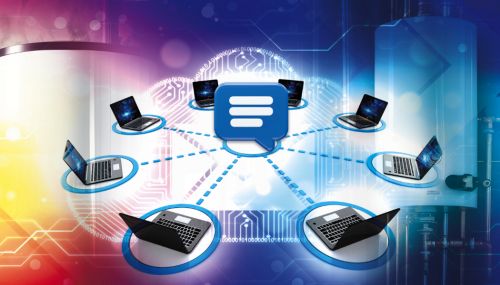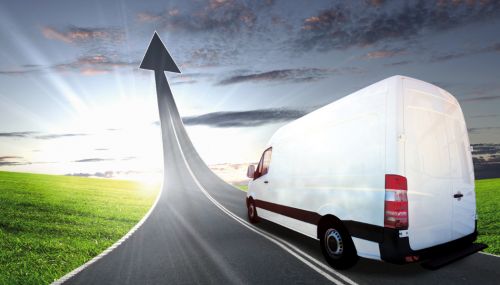All
Get the Upgrade Before the Emergency
by Richard Rutigliano, PriMedia, Inc.

How to turn repairs into replacements
If you have worked in the field for more than a minute, you have serviced those customers. The ones who are trying to get “just one more season” out of their heating equipment. They want you to create magic out of tape, glue and promises and create something that will keep their system chugging along.
And you perform the requested miracle and the system continues to chug, with a clank here and there, but at least it puts out heat. Until the next time. Because we all know that it is going to stop working again before the winter is over.
Holding On to the Bitter End
Every service tech has many of these stories, but there is data to back up the anecdotal evidence.
The Upgrade and Save Rebate program crosses multiple states and every financial demographic there is. The average age of a replaced boiler or furnace is 30 years old. There’s nothing “proactive” about keeping a unit that long!
In addition, a recent survey conducted by Clear Seas Research for another publication found that 71 percent of homeowners wait to replace their equipment until it is no longer working!
There is no surprise as to why consumers hold off: it’s the cost. Which is why, despite the discomfort, noise, and very real risk of waking up to another no-heat, no-hot-water December morning, customers are choosing to keep their old equipment.
Marketing 101
I’m going to let you in on a secret. There are two basic tenets in marketing: 1) Find the issue and offer a solution; and 2) Answer their objections up front.
Advertisers have been finding problems to solve since the beginning of the profession. Rings around collars. Not enough hair or too much hair or the wrong texture hair. Of course, their products offered the solutions to the perceived issues.
Your customer’s problem is not that “the equipment is old.” Their problem is “the equipment keeps failing,” or “the kids’ bedrooms will always be too cold,” or “you can’t run your dishwasher and take a shower.” These are specific pain points, and you need to offer a specific solution. “This unit is the most trouble-free we offer,” “when we properly size the equipment and clear the ductwork, your kids will be more comfortable,” or “this water heater provides virtually unlimited hot water so you don’t have
to wait.”
You may be thinking, why talk about these pain points if the customers are holding off because of the cost? Solving the customer’s problem is how you get to the second tenet: Address the drawback. “There is a problem (or problems) and we have a solution, but …”
Avis used its #2 status and “tried harder” to provide a better experience. Volkswagen embraced its size to “think small” amid gas guzzling behemoths and focus on details. L’Oreal told women they were “worth it” even if they were pinching pennies elsewhere.
New heating equipment is worth it. The hook is to explain to your customers why they should make the investment and how you are going to make it easier on them. This core message needs to be included in all your communications and repeated by every person on your payroll.
Spend Now, Save Longer
Every customer who wants to hold off for another season needs to understand the costs of their decision, from major repairs requiring expensive parts and labor to higher fuel bills. Waiting can mean they will need to pay more for a new boiler or furnace, and if you are in a state with clean heat standards (enacted or under consideration), replacement might not even be possible in a few years!
Step one is to show the customer how much he or she will save with a new unit. Most consumers will nod sagely when you start talking about AFUE, heat loss and output capacity, but that does not mean they understand. Luckily, the NORA FSA Calculator (www.fsacalc.com) does the work for you and provides very clear visuals. You can try to explain how much their equipment is costing them over time, and how much they can save with a new unit, but your task becomes much simpler when you can present a graph showing what saving $1,000 a year and more than $20,000 over 20 years looks like. While speaking with the customer, remind them that no matter where fuel prices are on any particular day, when they use fewer gallons, they are paying less than they would have otherwise!

Future savings are very nice, but customers struggling over a repair bill will have real concerns over the initial investment for the new equipment. You need to have a solution readily available! Start with the low-income financing that is available for home energy projects. The majority of our clients have one or two preferred vendors, but homeowners can apply even if you are not affiliated with a provider.
Of course, in addition to the financing, there are the NORA rebates, federal tax credits and incentives, and often local or manufacturer offers that can reduce the purchase price. These options need to be part of your very first conversations, so you can present the customer with the lowest numbers. If you can access the appropriate platforms, start the rebate approval process while sitting with the customers.
You may also want to take the time to review your average billings for installs over the last two or three years. Turn that data into a simple line chart showing how costs have steadily increased, or give it to your marketing company to produce an infographic that you can hand to customers and post on your website. The property owner needs to understand how waiting will cost him or her more when prices go up in the new year or when it is an emergency situation.
Making It a Team Effort
This strategy works when everyone on your team works the strategy. From your office staff to your technicians to your sales team, the messaging has to stay the same. That takes training and repetition.
Your techs as well as sales reps should be able to access the NORA calculator and bring up the annual savings.
Your customer service reps, techs and sales need to be able to explain to the customer the drawbacks of waiting until there is no other choice.
Schedule formal training sessions, provide talking points and “cheat sheets” for the team, and then monitor their customer interactions to make sure the information is getting through!
Start Early, Repeat Often!
Avis did not wait until someone was making travel plans to promote their “We try harder” message. L’Oréal did not limit “You’re worth it” to the make-up counters. These messages were embedded in every print ad and radio or TV commercial. L’Oréal had it front and center on its packaging. Avis had its tag line included on its invoices and contracts. If they had websites and social media back then, you know these themes would run through their feeds.
Your marketing and customer communications need to take a similar tack. Web site banners, blogs, and updates should regularly focus on the financial benefits of proactively replacing older equipment. The “Equipment” page(s) on your website should delve into the long-term savings and provide information on the financing programs with which you are allied. Even your printed or digital invoices can include a message saying something like, “Let us show you how to lower your fuel bills.”
Whether you produce a printed or emailed newsletter, every issue should include a piece explaining why customers should consider upgrading. As you discuss new or potential clean heating standards, mention that the reduced fuel use with new equipment will help the customer lower their GHG emissions, which could lower their obligations should these new anti-liquid fuel laws be enacted.
If you are running any paid advertising campaigns, consider creating an ad group specifically for equipment sales. Search and behavioral targeting can aim at those who are searching for information on new equipment or lingering on content about when to replace their boiler. Your programmatic, print and email campaigns can target individuals who have lived in their homes for at least ten or 15 years, where there is a greater likelihood of an older heating system. The programmatic targeting can add filters to find consumers falling into a range of estimated household incomes or home values, with many (or few) credit cards, low (or high) mortgages, lines of credit, discretionary income, and thousands of other details.
Your paid marketing will need to center around the same themes: replace before it’s too late; upgrade now, save later; we make it easier for you.
This repetition of your basic message will build up your customers’ confidence, so that when it is their time to make a decision, they decide to replace rather than repair.
Richard Rutigliano is President of PriMedia, Inc., an integrated marketing and communications firm specializing in the home energy sector. He can be reached at 516-222-2041 or rrutigliano@primediany.com.
Related Posts
 It’s Upgrade Season. Get the Sale.
It’s Upgrade Season. Get the Sale.
Posted on October 16, 2025
 Your Business Rises and Falls by Your Customer Service
Your Business Rises and Falls by Your Customer Service
Posted on September 19, 2025
 Teamwork Makes the Dream Work!
Teamwork Makes the Dream Work!
Posted on August 18, 2025
 Keeping Your Price Protection and Budget Plans Safe in a Volatile Market
Keeping Your Price Protection and Budget Plans Safe in a Volatile Market
Posted on July 28, 2025
Enter your email to receive important news and article updates.
